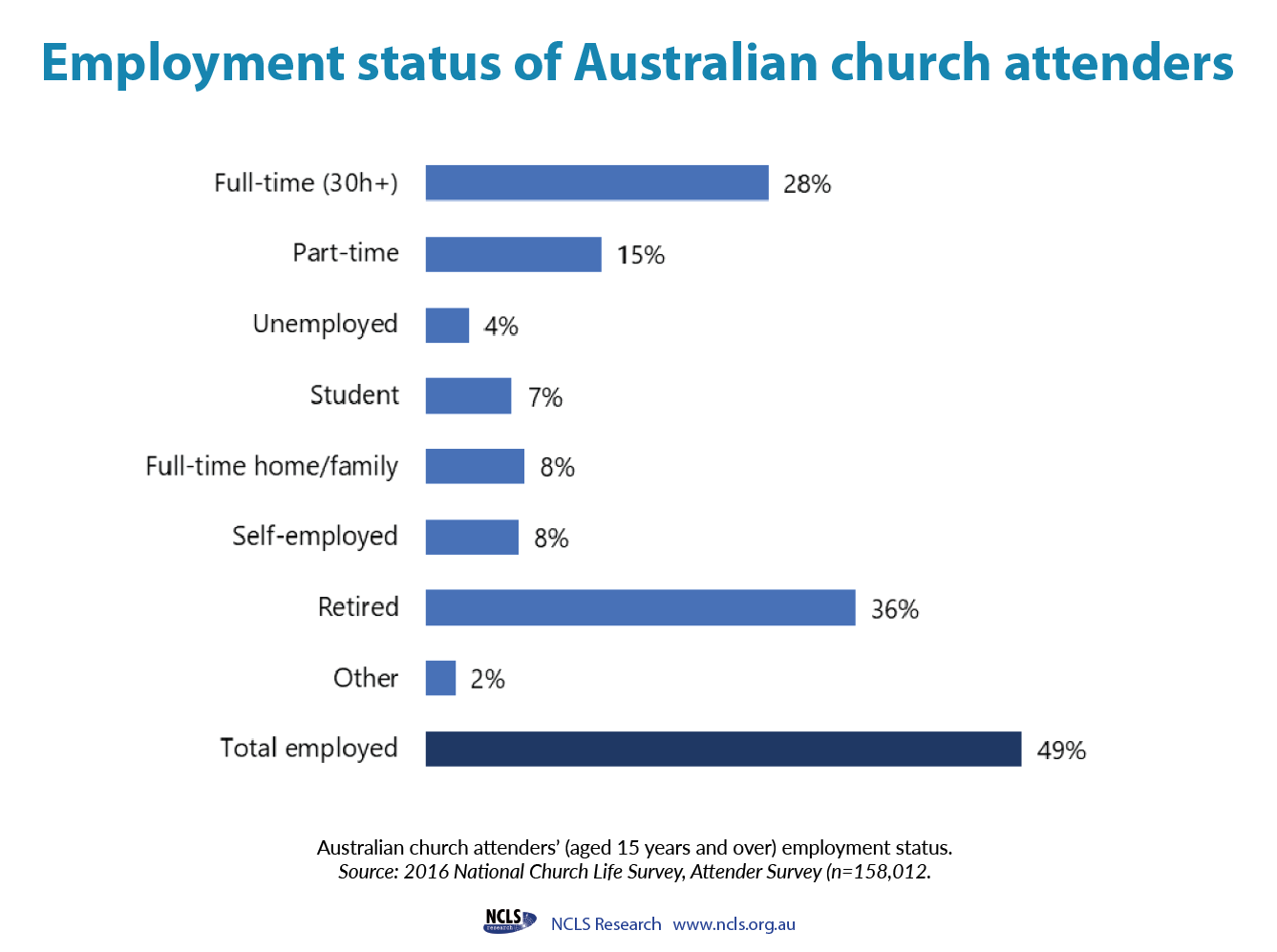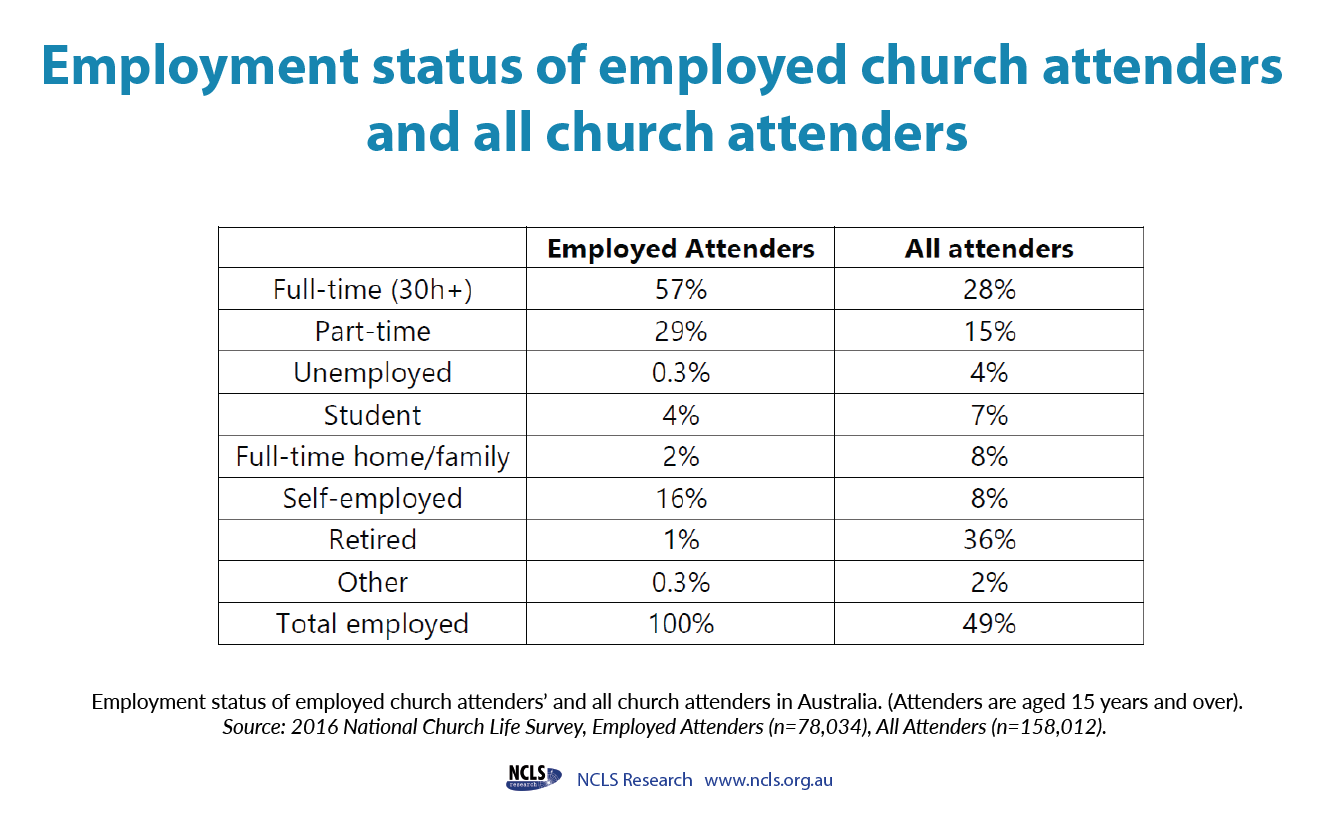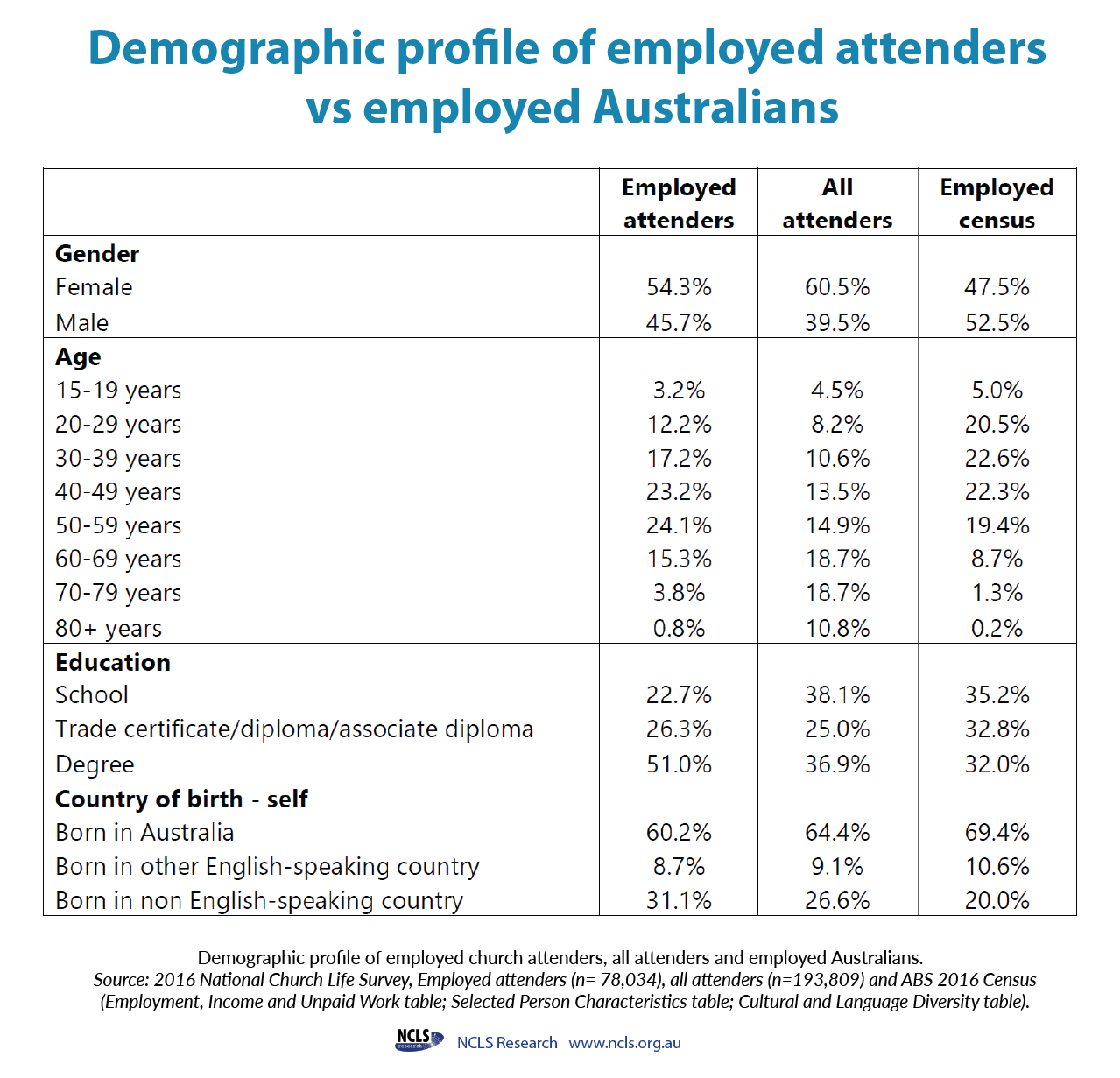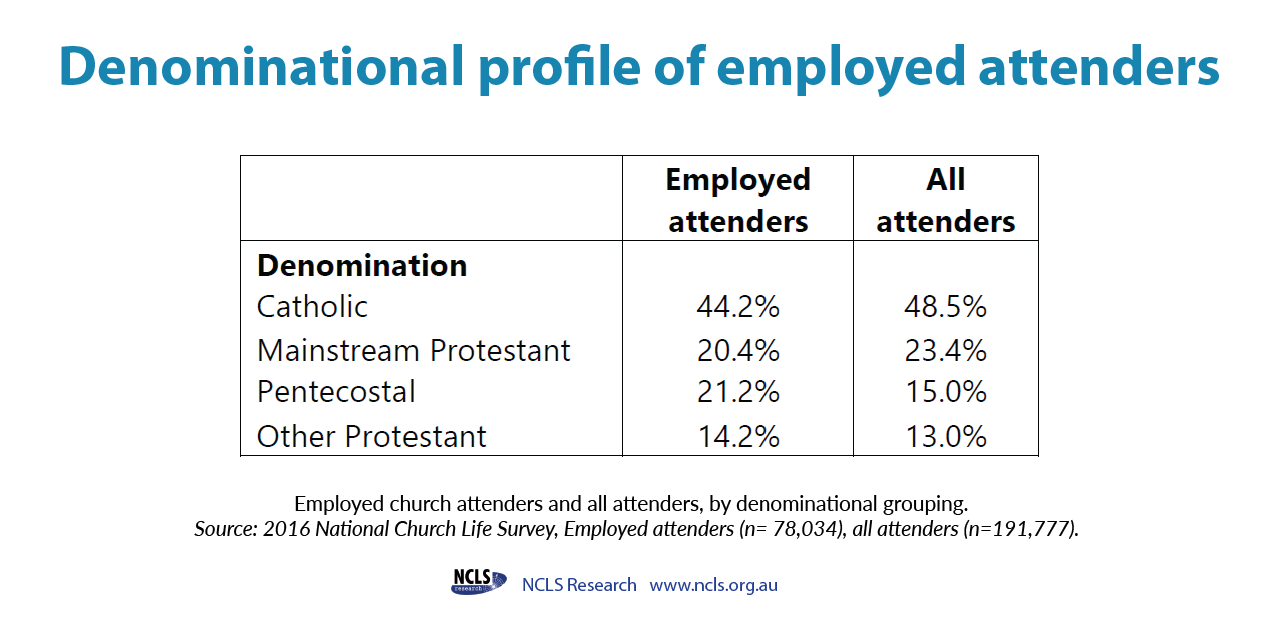Church attenders in employment have distinctive characteristics. Employed attenders are older than counterparts in the Australian community. As well, Pentecostals and evangelicals comprise a growing proportion of employed churchgoers.
Almost half of church attenders were employed in 2016. Employed attenders were more likely to be male, younger, university educated and born in a country in which English is not the main language spoken, than church attenders at large. Given this profile, churches are encouraged to help workers, particularly younger churchgoers entering the workforce, to explore the role their Christian faith can take in matters relating to their work.
Almost half of church attenders in 2016 were employed
Employed attenders are those who indicated that they were ‘employed full-time (30 hours or more)’, ‘employed part-time’ or ‘self-employed’ when asked their employment status.
Almost a half of church attenders in 2016 were employed (49%) (see figure below). This is a smaller proportion than the six in 10 Australians aged 15 years and older who were employed on census night (ABS, 2017).

When looking at employed attenders themselves, a majority of employed attenders were working full-time (57%), while approximately three in 10 were working part-time (29%). Some 16% of employed attenders were self-employed.

A third of employed attenders worked in people-focused professions
Approximately a third (35%) of attenders in 2016 in paid employment worked in people-focused professions (e.g. teacher, lawyer, social worker, nurse). Some 15% worked in technological fields (e.g.engineer, surveyor, accountant) while 11% were employed in administrative, clerical, or sales occupations(table below).

Demographic profile of employed church attenders
As shown in the table below, some features of employed church attenders are that they were:
- more likely to be male (46%) than all attenders (40%).
- much younger than attenders at large.
- more likely to hold a university degree (51%) than all attenders (37%).
- more likely to be born in a country in which English is not the main language spoken (31%) than attenders at large (27%).
These are all reflective of broader patterns in the church and in society. (See McAleese, Pepper and Powell, 2018 for a comparison of the demographic profile of church attenders and the wider Australian community).

Denominational profile of employed church attenders
The denominational profile of employed attenders is given in the table below. Employed attenders were:
- less likely to attend Catholic parishes and Mainstream Protestant churches than all attenders.
- more likely to attend Pentecostal churches and a little more likely to attend Other Protestant churches.
These differences reflect the younger age distributions of Pentecostal and Other Protestant churches.

Employed attenders are older than their counterparts in the Australian community at large. This is unsurprising, given the older profile in the churches in general (McAleese, Pepper and Powell, 2018). What is striking about the denominational profile of employed attenders is the rising proportions from Pentecostal and evangelical traditions. There are now more working Pentecostal attenders than working Mainstream Protestants, and while Catholic attenders still number more than four in 10 employed attenders, it is likely that their share of the total will decrease, given the younger profiles of the Pentecostal and evangelical churches.
What remains clear to employed churchgoers, is the support churches can give to helping workers, particularly younger churchgoers, to explore the role their Christian faith can take in matters relating to their work. A case study of one church ministry reaching younger adults in their first years of entering the workforce is available, in our article Made in the image of God the worker.
The strengthening of the integration of work and faith in churchgoers holds the promise of more mindful and intentional ways of being for Christians in the workplaces, and for strengthened contributions to the flourishing of the world. Further information about our research findings on faith-work integration in churchgoers is available in our article Moderate levels of faith work integration in Australian church attenders.
Employment changes things
3 years ago
by Kathy Jacka, Miriam Pepper
'Time strapped' people with less time for volunteering and participating at church.
'Time strapped' people with less time for volunteering and participating at church.
Bridging the work faith divide
3 years ago
One church' story on how they help their churchgoers to integrate their faith with their work life.
One church' story on how they help their churchgoers to integrate their faith and work life. An interview with Jo Wilton, C3 Church Miranda, in Sydney.
Churches support faith work integration but room for improvement
3 years ago
by Miriam Pepper, Kathy Jacka, Ruth Powell
Churches support faith-work integration but there's room for improvement
Pews are filled with people-helping tech-savvy professionals
7 years ago
by Kathy Jacka, Miriam Pepper
People-focussed professions most common amongst church attenders
People-focussed professions are the most common amongst church attenders. Technology professions are increasing, especially in younger attenders.









